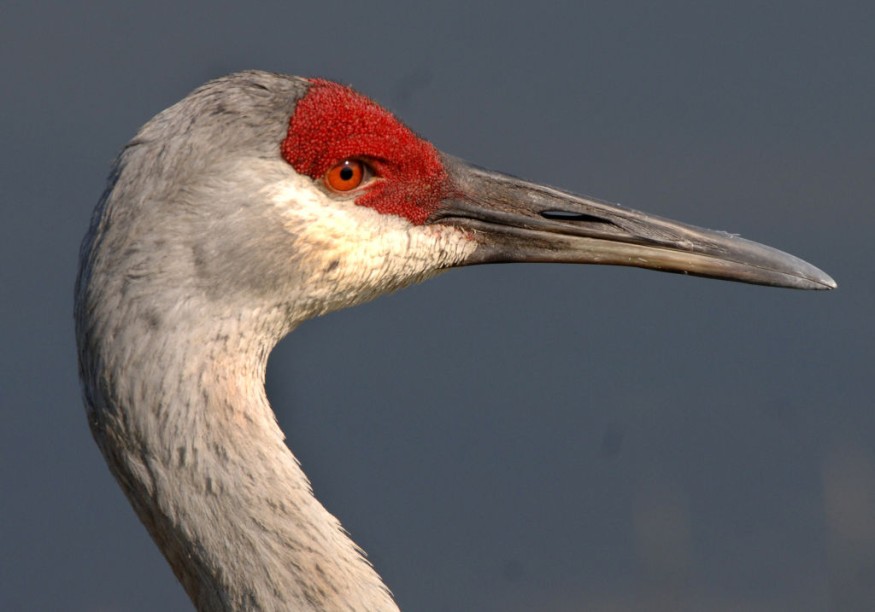
Sandhill Cranes, a threatened species, have been spotted most recently in Ohio's wetlands. Sightings reported have reached 350 counts.
Threatened Species Sandhill Crane
A tall wading bird with a long neck and beak is becoming more and more common in Ohio.
A recent volunteer-driven study of the bird discovered more than 350 sightings in Ohio, where the sandhill crane was previously entirely extinct.
Since the sandhill crane returned to Ohio in 1987, volunteers have been working to assist wildlife officials in tracking its condition.
Given their size and preference for open habitats, sandhill cranes are quite simple to detect if birdwatchers focus on the correct areas. They may be found in tiny bogs, marshes, and prairies throughout northern and southeastern North America in the summer. In locations like Texas' Anahuac National Wildlife Refuge and New Mexico's Bosque del Apache, they gather in vast flocks throughout the winter. Their distinctive bugling sounds are audible for kilometers, according to All About Birds.
Increased Sightings
According to the Ohio Department of Natural Resources database, the most current study covered 30 of Ohio's 88 counties. In 24 of those counties, the sandhill crane was sighted, with the six counties having the highest number of sightings being Wayne with 96 counts of sightings, Lucas with 77, Geauga with 63, Ottawa with 18, Logan with 15, and Williams with15 counts of sandhill crane sightings.
Sandhills like to nest in the Wayne County wildlife areas of Killbuck Marsh and Funk Bottoms. Volunteers combed a 10-square-mile survey block's crane habitat.
According to the Ohio Department of Natural Resources, this year's census marked the third consecutive year that the Buckeye State has tracked the condition of sandhill cranes.
Volunteers only counted 160 of the birds in 2021. The ODNR reports that in 2022, that figure increased slightly to 311 sightings. According to officials, Ohio continues to list the sandhill crane as a threatened species.
According to officials, sandhill crane sightings are most likely to occur in wetland regions, FOX8 reports.
eBird App
Every Global Big Day celebrates the bond between people and birds, the natural world, and one another. According to eBird, birds can inspire and bring people together. On World Migratory Bird Day, Saturday, May 13, more than 58,700 people came together to celebrate birds as part of Global Big Day. Amazingly, 7,000 more individuals participated in this year's Global Big Day by going birdwatching.
On over 150,000 eBird checklists, the entire birding world recorded 7,636 species of birds. On Global Big Day, 10% of those species had their noises captured and nearly half of them were photographed.
On May 13, eBirders collected more than 3.2 million bird observations, all of which are now freely accessible to aid in global conservation and scientific study. This quantity of bird-related data has never previously been obtained in one day.
eBird extended gratitude to all of the participants and sponsors on their website. According to eBird, the tales and the birds are what they like most during Global Big Day. from incredible journeys and surprising discoveries to joyous occasions shared. Some individuals go birdwatching for 5 minutes, while others stay up till midnight.
Related Article : Ivory-Billed Woodpeckers Evades Extinction, Sighting Reported 8 Decades After Absence in Louisiana
© 2025 NatureWorldNews.com All rights reserved. Do not reproduce without permission.





